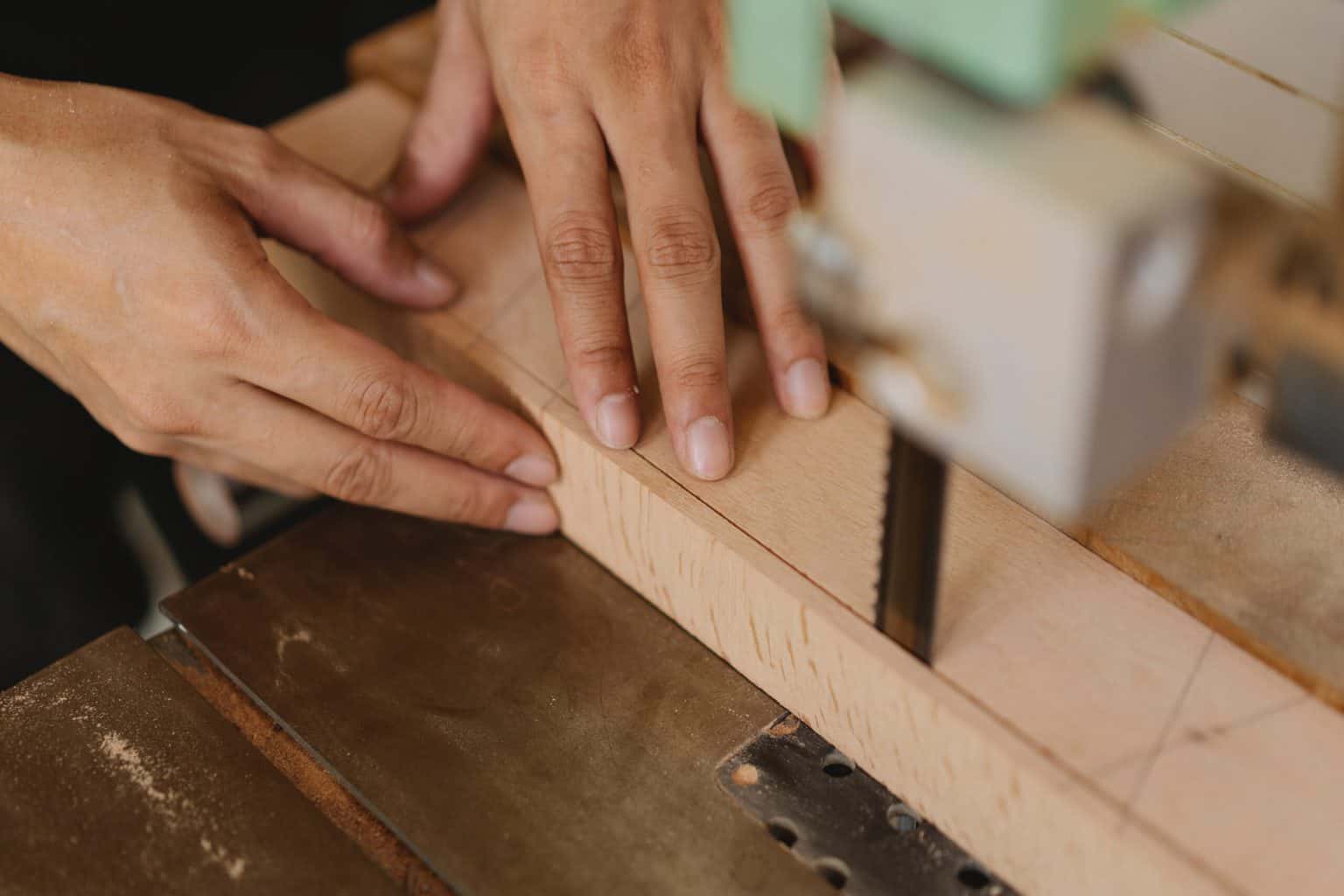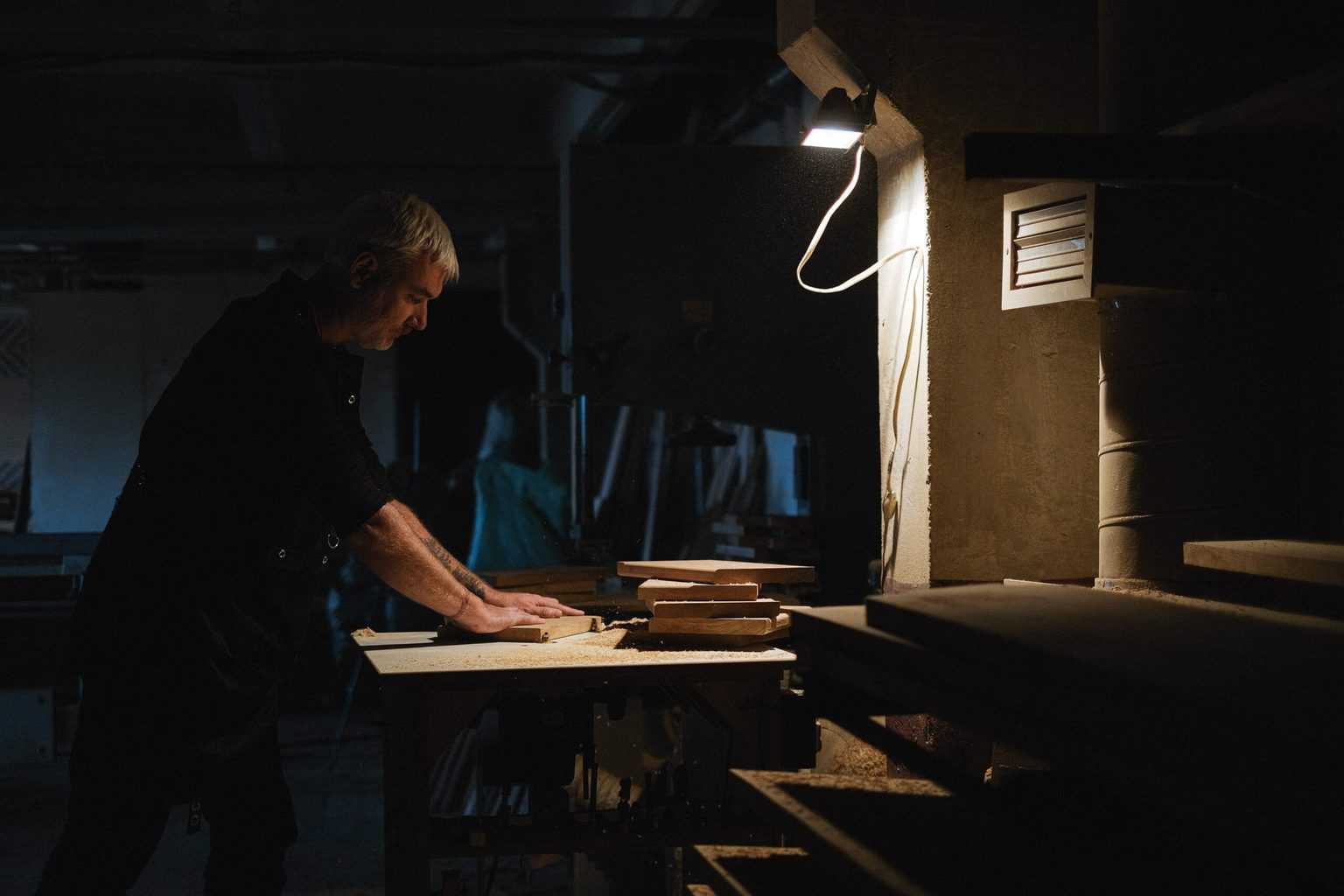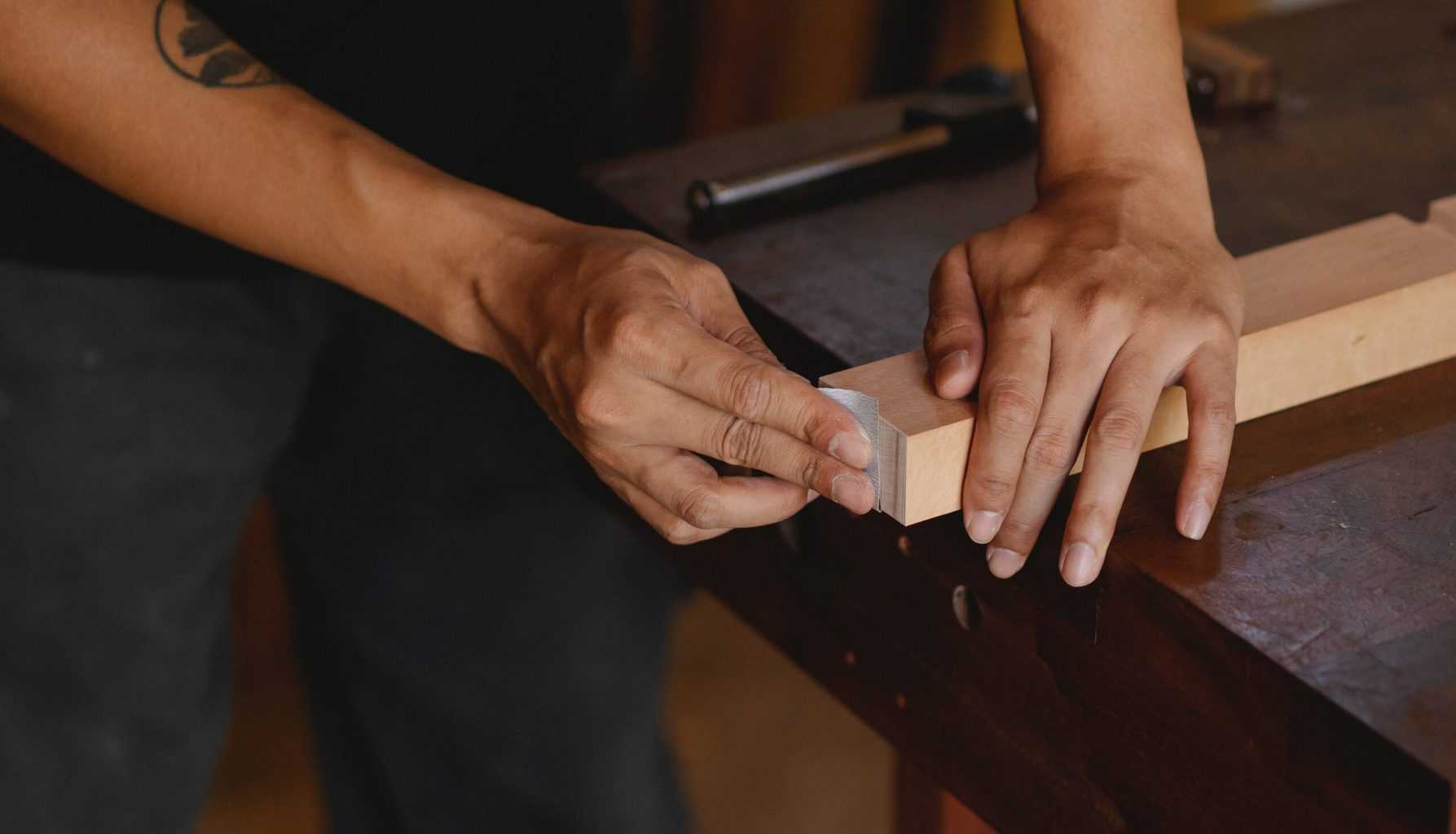As an Amazon Associate we earn from qualifying purchases.
What makes your ordinary project turn into a truly outstanding piece of art is the ability to correct your mistakes. That’s why an eraser is considered as important as the pencil itself to make a perfect drawing!
The craft of woodworking requires skills, patience, emotion and creativity. However, all the hard work that you put in a big project might go in vain, if you make a simple error.
Suppose you have mistakenly drilled a hole bigger than it needs to be. Now what? The screws won’t grip on the surface anymore! Should you throw the whole project away and start over?
Relax. There’s an easy way out!
Wood putty and wood filler are two common items that are used by carpenters to fill these inconsistencies in timber and repair any defects that might be visible. As a DIYer, you must know about the difference of wood filler vs wood putty and which one is better suited for your project.
If you want to know more about wood filler and wood putty and dive into the world of woodcraft to fix all those tiny imperfections, read along to the rest of wood putty vs wood filler comparison.
What Is Wood Filler?
Wood filler is a substance that is used to repair wooden products.
There is a small catch though. You will only be able to repair minor imperfections like scratches, scrapes, holes and cracks in open grain logs with wood filler.
Have you ever noticed that some wooden surfaces are much more porous than the others?
For instance, you can examine a walnut, ash or oak material and find large pores within their surfaces. That’s where a wood filler comes into play. The main purpose of using wood filler is to hide all those imperfections in a way that it doesn’t mar the visual appearance of a surface.
You can choose to use wood filler or use a wood putty that’s water-based product, which can easily be thinned by adding more water. And for a bigger project, you may use wood filler that’s solvent-based and come with a thicker consistency and are usually more heavy-duty.
Regardless of what kind of wood filler you use, wood fillers will help you fill holes inside a wooden furniture, smoothen the surface and repair cracks on the floors. Once the wood filler dries out, you will be able to sand and repaint the surface for a better finish.

Benefits of Wood Filler
Wood Filler Dries Quickly
While we are fond of good quality work, most often we need to hurry up to meet our deadlines.
Wood filler is a great choice for busy people. Once applied, wood filler dries pretty fast. Although the drying time also depends on how much of the wood filler you have used in a particular area, typically it takes about 10 to 15 minutes to dry the surface completely.
Different Types of Wood Filler
When it comes to choosing a particular wood filler type, you must remember what kind of surface you are working on. Sometimes you may need to mix the wood filler with a little bit of sawdust to bring a more natural-looking finish to your furniture.
Latex
Wood filler is one of the most widely used products all over the world. It’s a water-based wood filler that is easy to clean up and typically used on raw timber for sealing any types of cracks or pores on them.
Polyurethane
Wood filler is most commonly used on furniture. Wood filler helps seal the outer surface of any pre-finished furniture and protects it from moisture and other environmental issues.
Epoxy
Wood fillers are designed to work well on unfinished wood. You need to sand it well to get the best result out of this product. Once applied, it’s a good idea to use a sealant to keep it from getting brittle or crumbled.
Using Purpose
Wood fillers work best on porous surfaces.
If the surface that you are working on lacks enough holes in it, then you should try sanding it for a bit before applying wood filler.
There’s a reason why wood filler is such a great choice for unfinished timber. After applying wood filler on a finished surface, you will notice that the surface becomes a little uneven. And you won’t be able to make it smooth without damaging the log at all!
An unfinished surface, on the other hand, already contains holes in it and you can sand it later if required.
Perfect For Filling Large Holes
No matter how deep the hole is, wood fillers are there to save your day!
It’s hard to find any other alternatives when it comes to repairing large holes or cracks on any surface. Wood filler is available in various consistency, which allows us to use wood filler in a lot of different projects.
To use wood filler for repairing large cracks, use sandpaper to smooth out the surface beforehand. After applying wood filler, let it dry and then paint over the surface for a smoother result.

Disadvantage of Wood Filler
Not Flexible
As we all know temperature causes the wooden furniture to expand or shrink in size from time to time.
However, fillers aren’t flexible enough to adapt to this change in the environment and tend to break easily. So, it’s best not to use wood filler on outdoor furniture like a patio bench, chair or table etc.
What Is Wood Putty?
Wood putty is a substance that is typically used on surfaces that have already been stained and varnished. Wood putty is also referred to as “Plastic Wood”.
While there are many different ways of making wood putty, usually most wood putty manufacturers use calcium carbonate, colors and oil-based components to make wood putty.
Wood putty takes the form of a soft clay once you start adding water into its mixture. The dough-like texture of wood putty allows it to stay wet for a long time. However, if you want wood putty to dry quicker, then you have to mix the wood putty with some other hardening chemicals and make the wood putty stiffer.
It’s best to apply wood putty on stained or finished surfaces, as wood putty contains chemicals that shouldn’t be used on raw timber. Once applied, wash the leftover oil residue and sand it to make the surface smooth.
Benefits of Wood Putty
Long Lasting
Using wood putty helps you save a lots in the long run. Wood putty is durable and keeps your repairing intact for a long time.
Wood putty comes in small containers that are enough to last for a couple of projects at a time. It’s advisable to keep the containers in a safe place if you don’t need the content of an entire can at once.
Here’s an interesting fact.
After several months or even a year, if you decide to check on the wood putty and see that the material has become dry and brittle, you can easily revive it with just a few drops of acetone into the mixture!
Available In Different Tones
A stained surface has certain characteristics. For instance, wood putty comes with a particular shade of color and texture. And it’s quite important that you use the same exact shade of wood putty while repairing any whole to keep it from becoming an eyesore!
Fortunately, wood putty comes in different shades and tones to match with any given project that you can think of. Hey! You can even buy your own color to better match the surface you are working on.
Adhesive Property
A 2-in-1 product is always everyone’s favorite because it saves you from purchasing a different wood putty and wood filler and helps finish your work quickly!
Well, wood putty isn’t an ordinary product that can only perform one task. It repairs holes and cracks as well as work as a sealing agent at the same time! So, you don’t need to use any adhesive sealer on the surface after using this product.
However, keep in mind this technique works only on oil-based finishes.

Easily Applicable
You can easily apply wood putty on any wooden surface using a wood putty knife. If the area is too small or the angle is a little bit difficult to reach, then you can take a small portion on your finger and smear over the surface.
If you see any excess wood putty that’s left on the surface, wipe it off with a damp cloth and let it dry for a while.
Disadvantage of Wood Putty
Damages Raw Wood
Wood putty contains ingredients that are harmful to raw timber and it also takes a long time to dry. So, if the log is unfinished while you are applying this product, the chemicals in the solution might end up damaging the surface before it gets stained.
Wood Putty vs Wood Filler – Head to Head Comparison
Till now, we have discussed the advantages and disadvantages of both wood putty vs wood filler. Although wood putty and wood filler have some similarities, we have noted down the aspects which differ from each other and present them down below.
Uses
Wood fillers are mostly used on indoor furniture. In fact, it won’t work on any outside projects, as wood putty isn’t flexible enough to keep up with the harsh environment found outdoor.
For example, when the sun is at its peak and it’s too hot and uncomfortable, the fillers shrink in size! This could end up causing a major disaster if, all of a sudden, a repaired piece falls off from its place!
Wood putty is an excellent substance to use in both indoor and outdoor projects. Not only does wood putty hold up its structure well, but also, it’s waterproof and resistant to high temperatures. Therefore, these are more suitable for any outdoor-filling tasks.
Material
Typically, all fillers contain solvent, bulking agent and a binding agent which helps hold all ingredients together. Depending on what type of fillers you are using, the materials may vary from each other and contain compounds like, epoxy, latex, polyurethane, clay and wood fibers.
On the other hand, manufacturers usually decide on which ingredients to use in a particular brand of wood putty. However, several universal ingredients are used on almost all types of products.
Most of the materials consist of oil-based compounds. There are several other compounds used in making wood putty including boiled linseed oil, color and some calcium carbonate.
Drying Time
Wood fillers dries a lot quicker than putty.
Typically, it takes around 10 to 15 minutes to dry an unfinished surface. However, if the area is quite large and the cracks are deep, then it might take up to eight hours depending on how much of the solution you have applied.
On the other hand, wood putty takes its sweet time to dry completely. You have to let the surface rest for at least several hours before it becomes ready. In some cases, it might take up to an entire day!
Application
Fillers are used on raw timber. It also requires a lot of sanding and polishing work to be done before it becomes ready. That’s why it’s best to use this product on surfaces before they get stained.
Putty consists of some chemical ingredients that might harm raw log. Therefore, it is used on a varnished surface most of the time.

Bottom Line – Which One to Go For?
Now that we have laid out all the pros and cons of wood putty and wood filler in front of you, it’s your turn to decide which one is better suited for you.
Based on our research on wood filler vs wood putty, it’s safe to say wood putty and wood filler are both excellent at what they do and seal any surface with perfection. Wood putty and wood filler also do a pretty good job of repairing and hiding imperfections.
However, if you are working with unfinished timber and in a hurry to move onto another project right after this one, then wood filler is a better option for you.
On the other hand, if you have an outdoor project in queue, like free standing wooden steps, and the surface is already stained, then wood putty will work like a charm in your favor!
This may even improve how you fix water-damaged wood. Whichever option you choose on your next craft, don’t forget to share your experience with wood putty and wood filler to others and let them know how the final result turned out!

